Fault Parameter Estimation Using Adaptive Fuzzy Fading Kalman Filter
Abstract
1. Introduction
2. Parameter Estimation with Kalman Filter
2.1. Kalman Filter
- (i)
- Time update (or prediction) equations:
- (ii)
- Measurement update (or correction) equations:
2.2. Joint Kalman Filter
2.3. Extended Kalman Filter
3. Adaptive Fuzzy Fading Kalman Filter for Fault Parameter Estimation
3.1. Existing Adaptive Fading Kalman Filter
3.2. Design of Adaptive Fuzzy Fading Kalman Filter
4. Numerical Simulations
4.1. Fault Parameter Estimation for Linear System
4.1.1. Normal Parameter Estimation
4.1.2. Fault Parameter Estimation
4.2. Fault Parameter Estimation for Nonlinear System
5. Discussion
Author Contributions
Funding
Conflicts of Interest
Appendix A. Effect of Large Window Length in AFKF
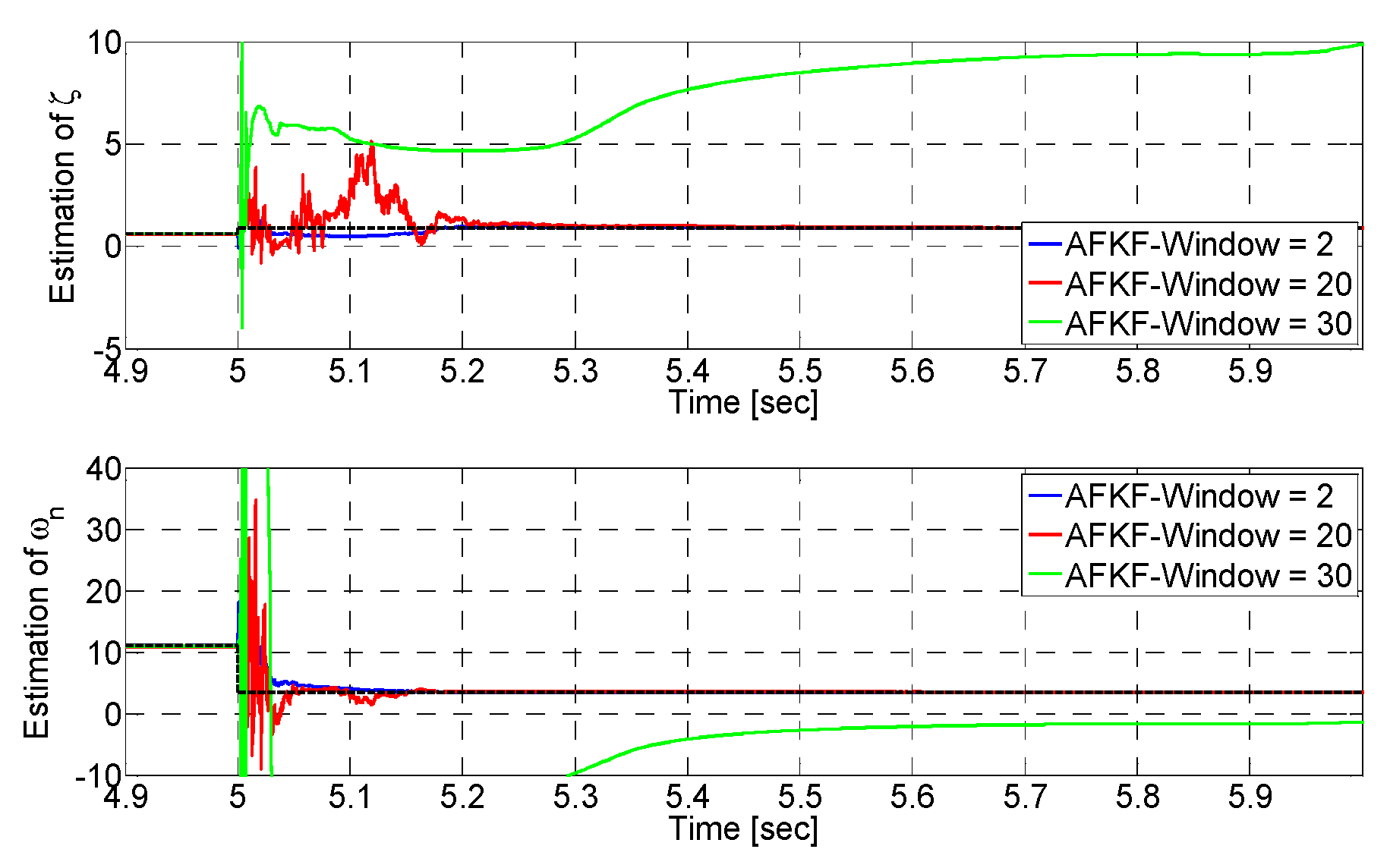
References
- Hwang, I.; Kim, S.; Kim, Y.; Seah, C.E. Survey of fault detection, isolation, and reconfiguration methods. IEEE Trans. Control Syst. Technol. 2010, 18, 636–653. [Google Scholar] [CrossRef]
- Edwards, C.; Lombaerts, T.; Smaili, H. A benchmark challenge. In Fault Tolerant Flight Control; Springer: Berlin/Heidelberg, Germany, 2010. [Google Scholar]
- Zhanga, Y.; Jiang, J. Bibliographical review on reconfigurable fault-tolerant control systems. Annu. Rev. Control 2008, 32, 229–252. [Google Scholar] [CrossRef]
- Kopp, R.; Orford, R. Linear regression applied to system identification for adaptive control systems. AIAA J. 1964, 1, 2300–2306. [Google Scholar] [CrossRef]
- Cox, H. On the estimation of state variables and parameters for noisy dynamic systems. IEEE Trans. Autom. Control 1964, 9, 5–12. [Google Scholar] [CrossRef]
- Nelson, L.W.; Stear, E. The simultaneous on-line estimation of parameters and states in linear systems. IEEE Trans. Autom. Control 1976, 21, 94–98. [Google Scholar] [CrossRef]
- Kim, K. An Adaptive Filter Design for a Fault Tolerant Navigation System. Ph.D. Thesis, Seoul National University, Seoul, Korea, February 2006. [Google Scholar]
- Kim, K.; Lee, J.; Park, C. Adaptive two-stage extended kalman filter for fault-tolerant INS-GPS loosely coupled system. IEEE Trans. Aerosp. Electron. Syst. 2009, 45, 125–137. [Google Scholar]
- Loebis, D.; Sutton, R.; Chudley, J.; Naeem, W. Adaptive tuning of a Kalman filter via fuzzy logic for an intelligent AUV navigation system. Control Eng. Pract. 2004, 12, 1531–1539. [Google Scholar] [CrossRef]
- Jetto, L.; Longhi, S.; Vitali, D. Localization of a wheeled mobile robot by sensor data fusion based on a fuzzy logic adapted Kalman filter. Control Eng. Pract. 1999, 7, 763–771. [Google Scholar] [CrossRef]
- Kobayashi, K.; Cheok, K.C.; Watanabe, K.; Muneka, F. Accurate differential global positioning system via fuzzy logic Kalman filter sensor fusion technique. IEEE Trans. Ind. Electron. 1998, 45, 510–518. [Google Scholar] [CrossRef]
- Ljung, L.; Söderström, T. Theory and Practice of Recursive Identification; MIT Press: Cambridge, MA, USA, 1983. [Google Scholar]
- Ljung, L. Asymptotic behavior of the extended Kalman filter as a parameter estimator for linear systems. IEEE Trans. Autom. Control 1979, 24, 36–50. [Google Scholar] [CrossRef]
- Fitzgerals, R.J. Divergence of the kalman filter. IEEE Trans. Autom. Control 1971, 16, 736–747. [Google Scholar] [CrossRef]
- Mamdani, E.H. Application of fuzzy logic to approximate reasoning using linguistic synthesis. IEEE Trans. Comput. 1977, 26, 1182–1191. [Google Scholar] [CrossRef]
- Takagi, T.; Sugeno, M. Fuzzy identification of systems and its applications to modeling and control. IEEE Trans. Syst. Man Cybern. 1985, 15, 116–132. [Google Scholar] [CrossRef]
- Merritt, H.E. Hydraulic Control Systems; John Wiley & Sons, Inc.: Hoboken, NY, USA, 1967. [Google Scholar]
- Slotha, C.; Esbensen, T.; Stoustrup, J. Robust and fault-tolerant linear parameter-varying control of wind turbines. Mechatronics 2011, 21, 645–659. [Google Scholar] [CrossRef]
- Lan, J.; Patton, R.; Zhu, X. Fault tolerant wind turbine pitch control using adaptive sliding mode estimation. Renew. Energy 2018, 116, 219–231. [Google Scholar] [CrossRef]
- Besançon, G.; Voda, A.; Jouffroy, G. A note on state and parameter estimation in a van der Pol oscillator. Automatica 2010, 46, 1735–1738. [Google Scholar] [CrossRef]

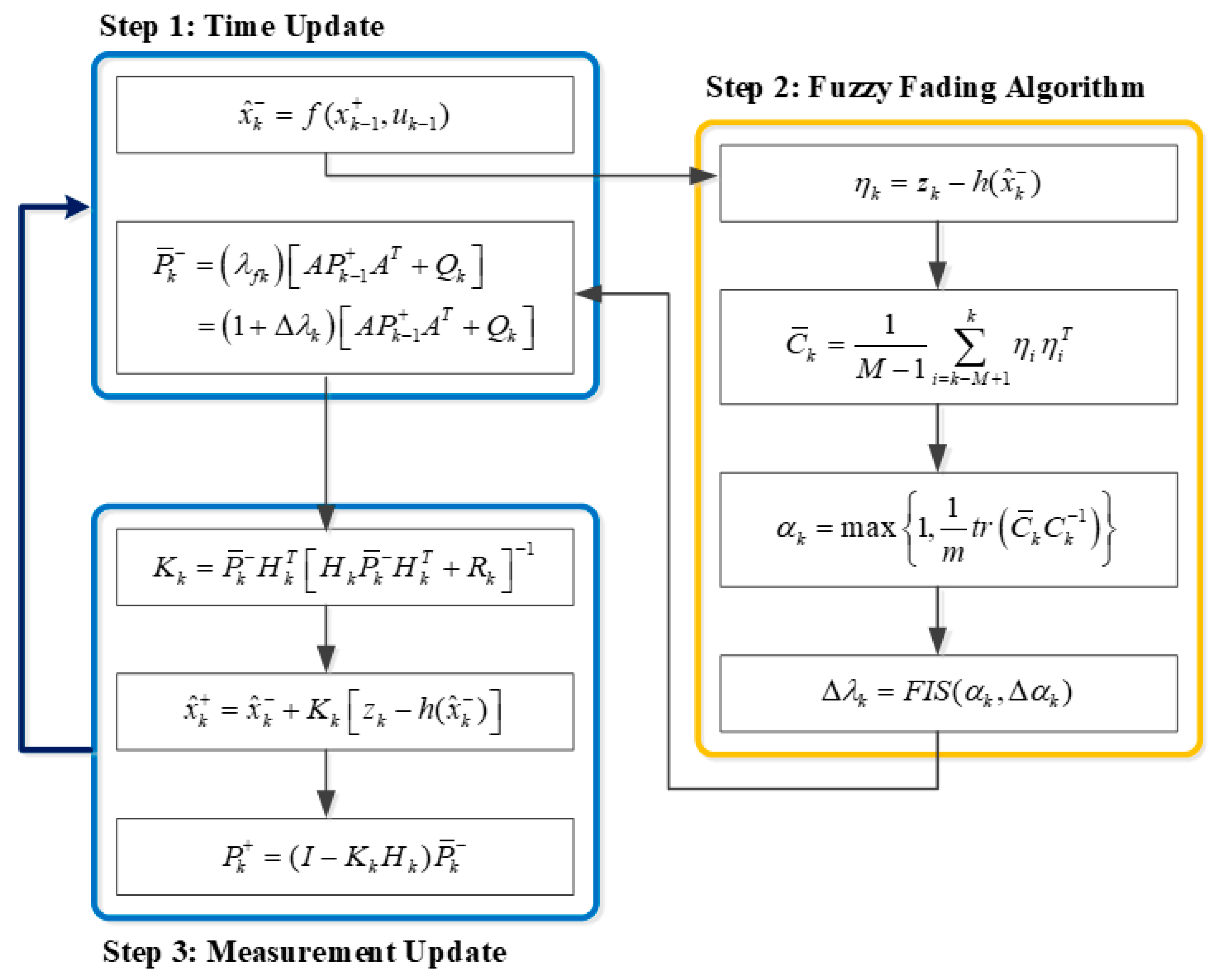
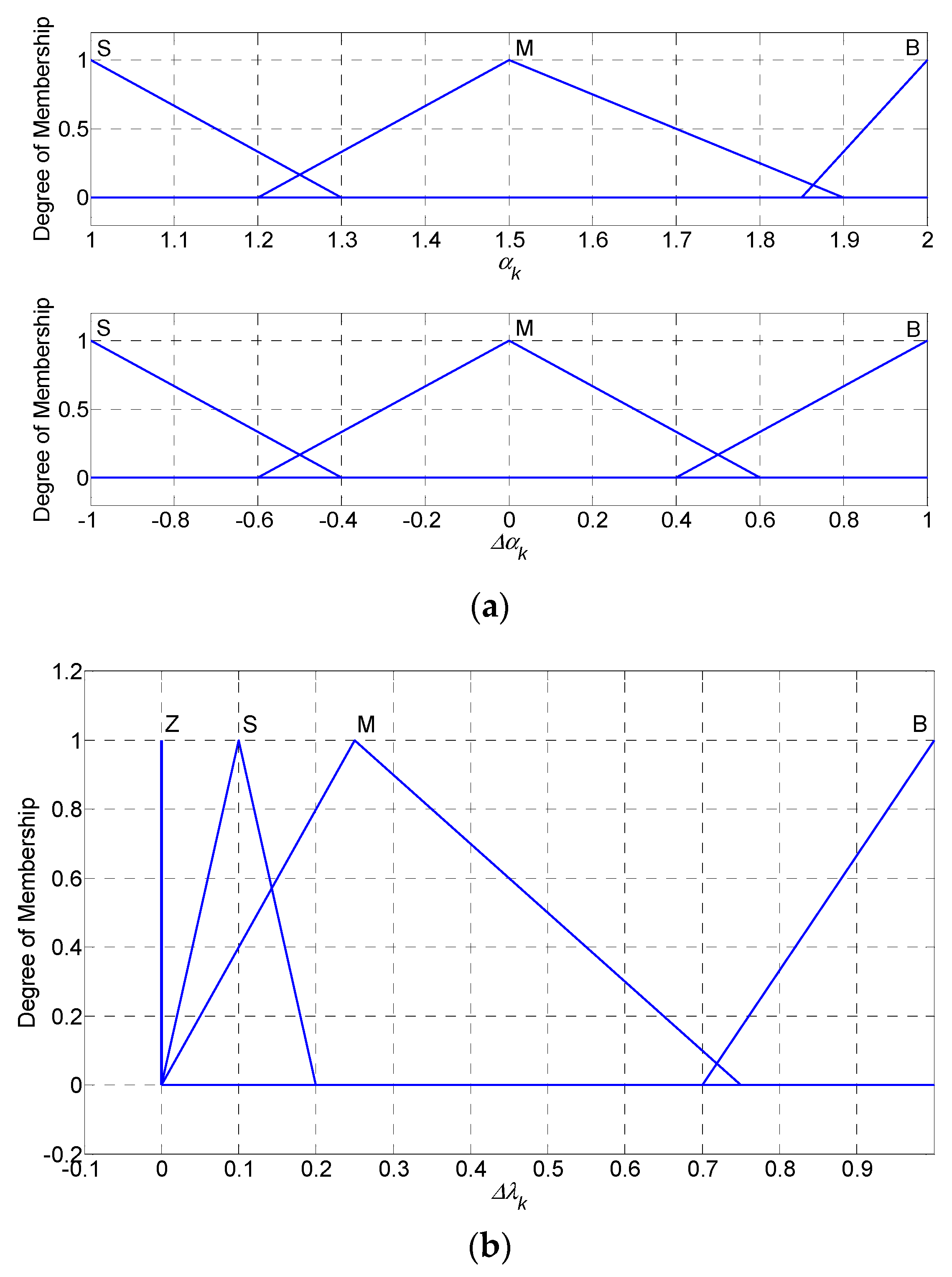
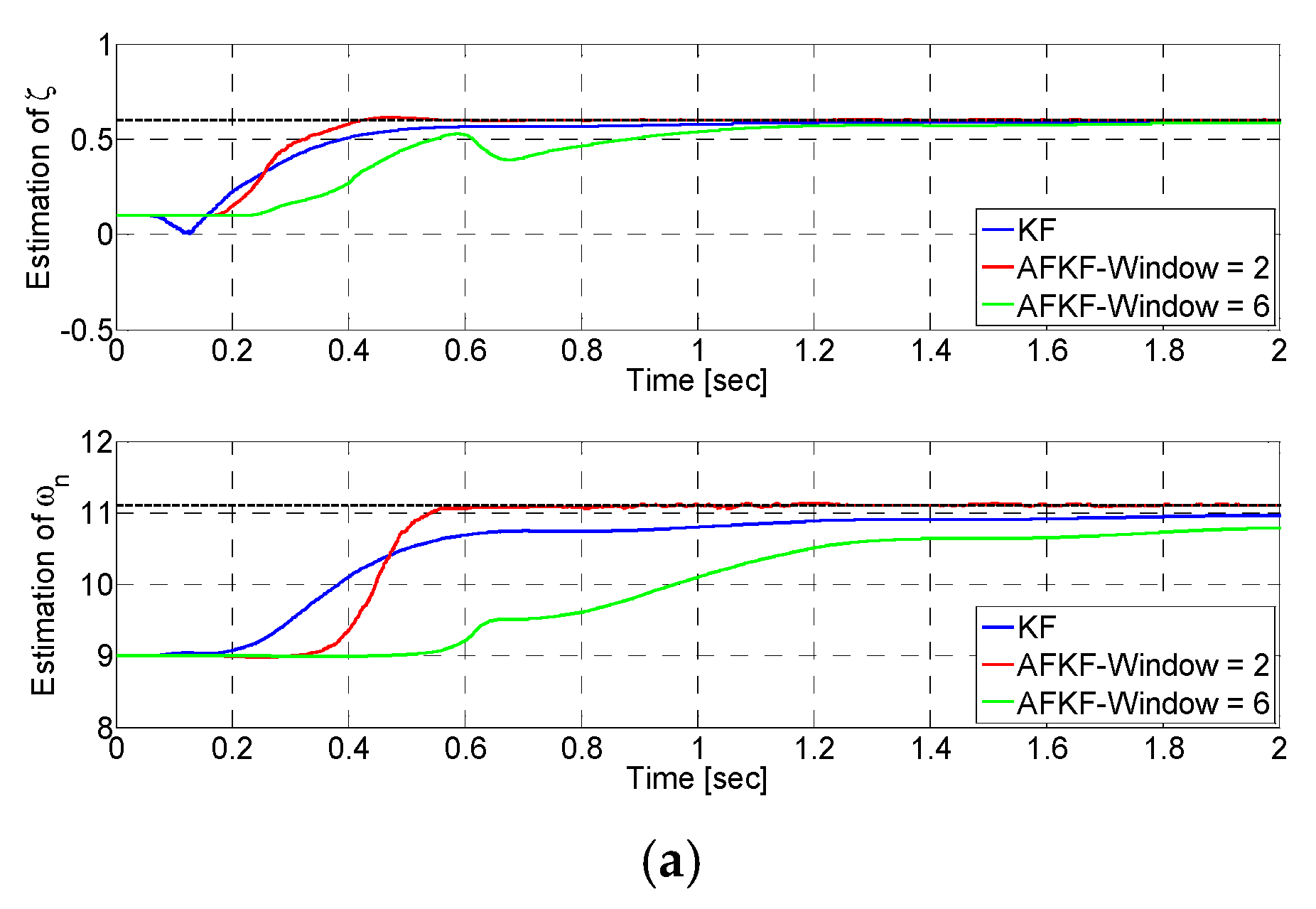
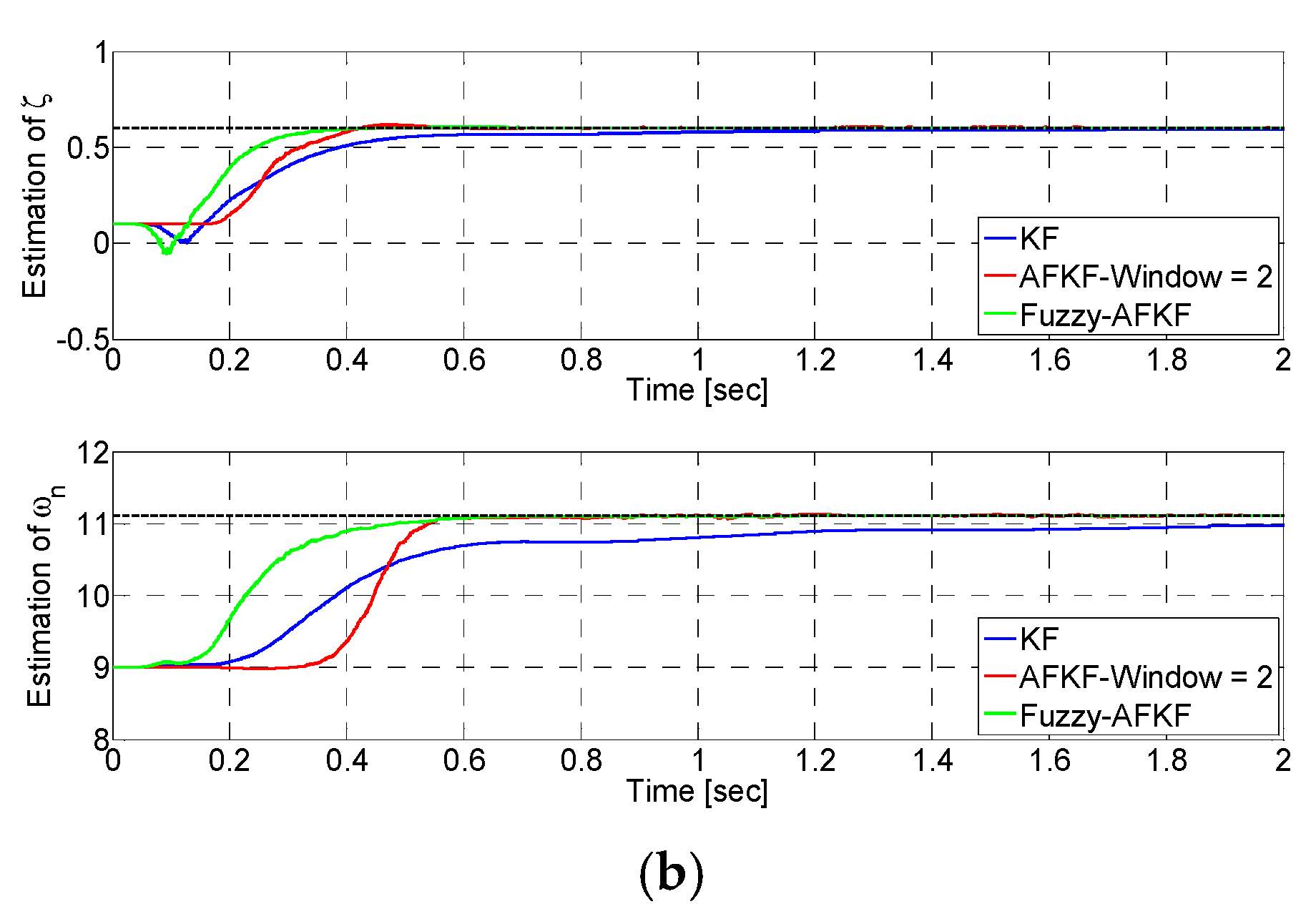
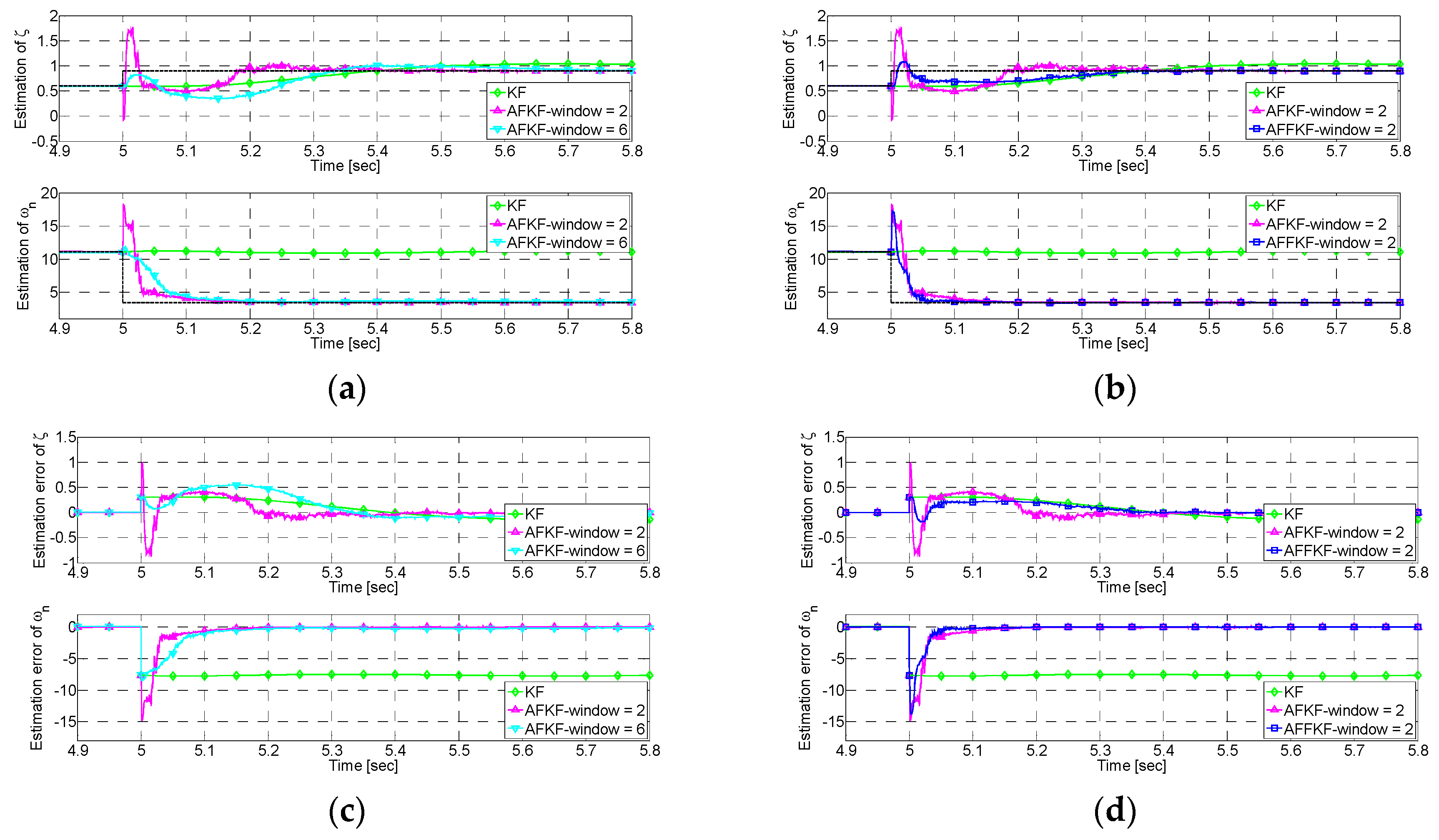
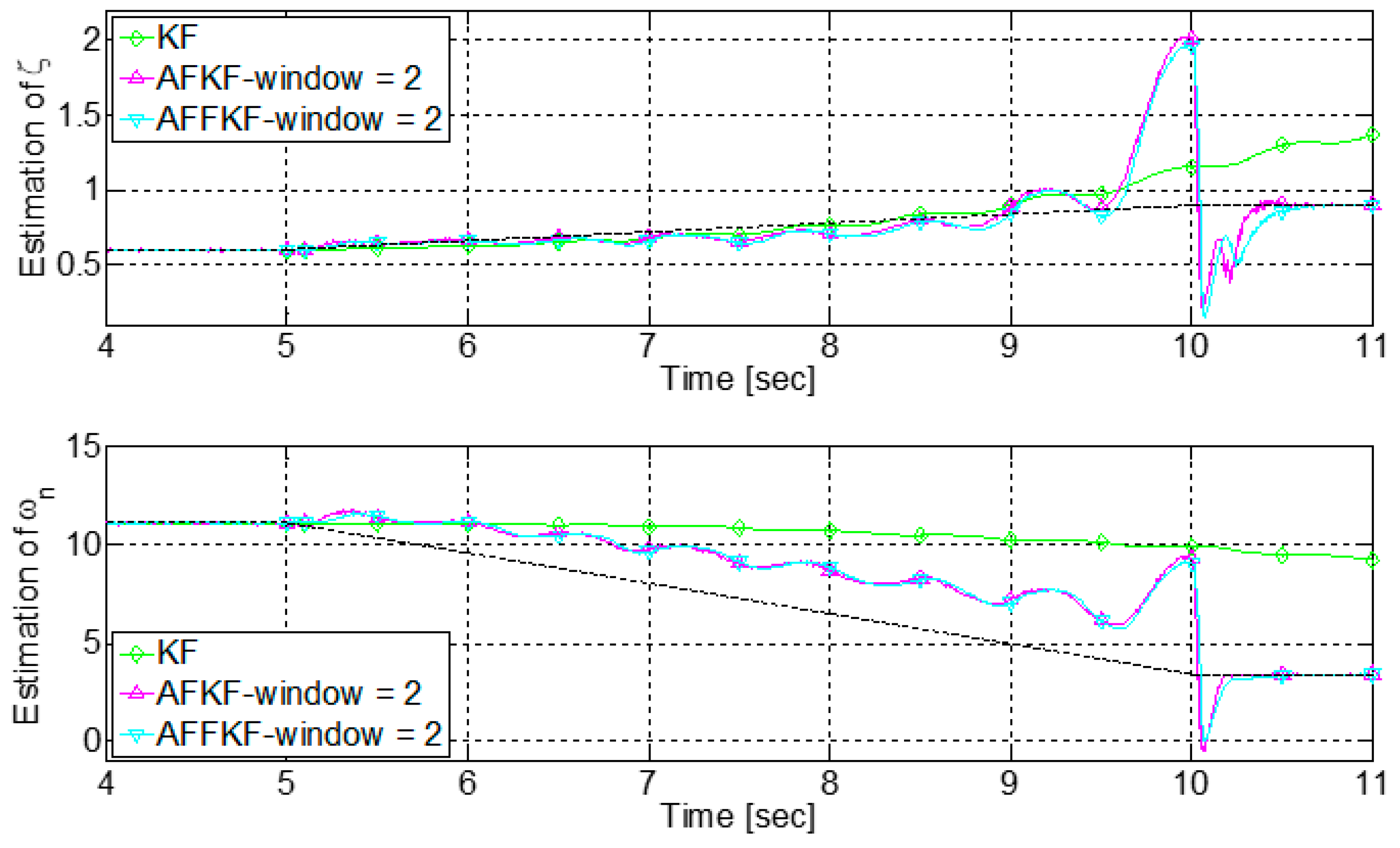

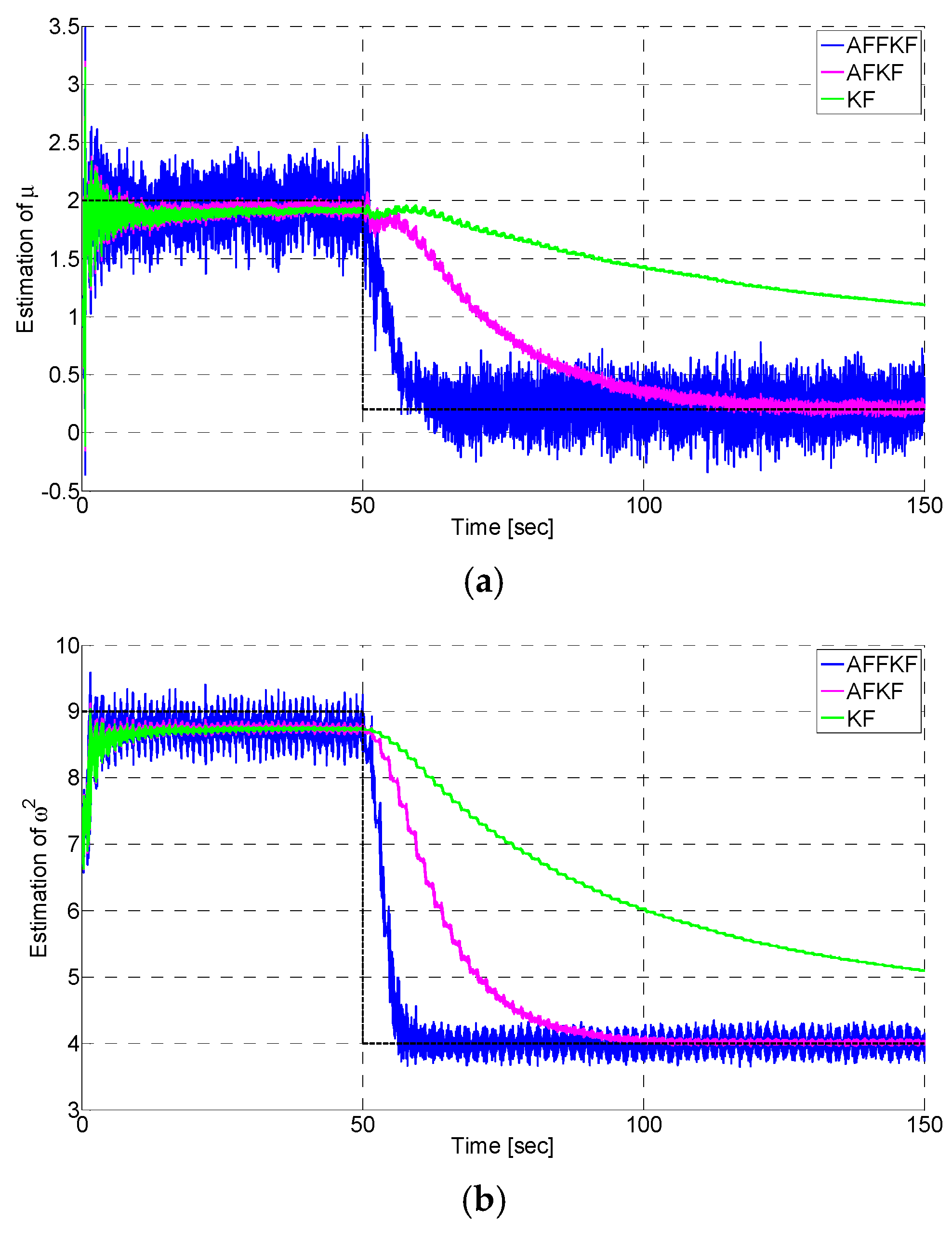
| S | M | B | ||
|---|---|---|---|---|
| S | S | Z | S | |
| M | Z | S | M | |
| B | S | M | B | |
| Performance Index | Approaches | |||
|---|---|---|---|---|
| Standard KF | AFKF (M = 2) | AFKF (M = 6) | AFFKF | |
| J(ζ) | 0.1132 | 0.1093 | 0.1444 | 0.0989 |
| J(ωn) | 0.5672 | 0.6127 | 0.8848 | 0.4250 |
| Performance Index | Approaches | |||
|---|---|---|---|---|
| Standard KF | AFKF (M = 2) | AFKF (M = 6) | AFFKF | |
| J(ζ) | 0.4654 | 0.0741 | 0.0667 | 0.0454 |
| J(ωn) | 5.9493 | 0.7809 | 0.4712 | 0.6259 |
| Performance Index | Approaches | ||
|---|---|---|---|
| Standard KF | AFKF (M = 2) | AFFKF | |
| J(ζ) | 0.0633 | 0.2005 | 0.1875 |
| J(ωn) | 4.5716 | 1.9325 | 1.9125 |
© 2019 by the authors. Licensee MDPI, Basel, Switzerland. This article is an open access article distributed under the terms and conditions of the Creative Commons Attribution (CC BY) license (http://creativecommons.org/licenses/by/4.0/).
Share and Cite
Kim, D.; Lee, D. Fault Parameter Estimation Using Adaptive Fuzzy Fading Kalman Filter. Appl. Sci. 2019, 9, 3329. https://doi.org/10.3390/app9163329
Kim D, Lee D. Fault Parameter Estimation Using Adaptive Fuzzy Fading Kalman Filter. Applied Sciences. 2019; 9(16):3329. https://doi.org/10.3390/app9163329
Chicago/Turabian StyleKim, Donggil, and Dongik Lee. 2019. "Fault Parameter Estimation Using Adaptive Fuzzy Fading Kalman Filter" Applied Sciences 9, no. 16: 3329. https://doi.org/10.3390/app9163329
APA StyleKim, D., & Lee, D. (2019). Fault Parameter Estimation Using Adaptive Fuzzy Fading Kalman Filter. Applied Sciences, 9(16), 3329. https://doi.org/10.3390/app9163329




